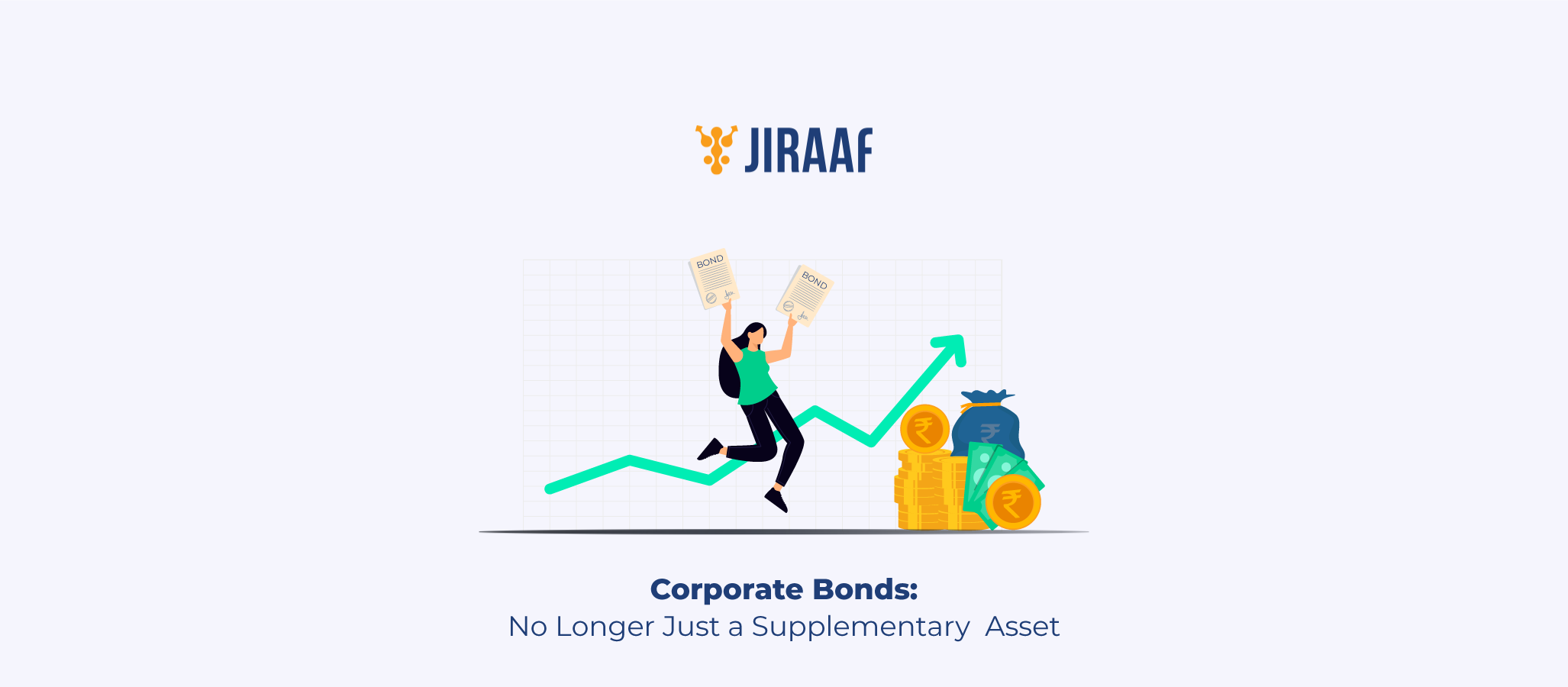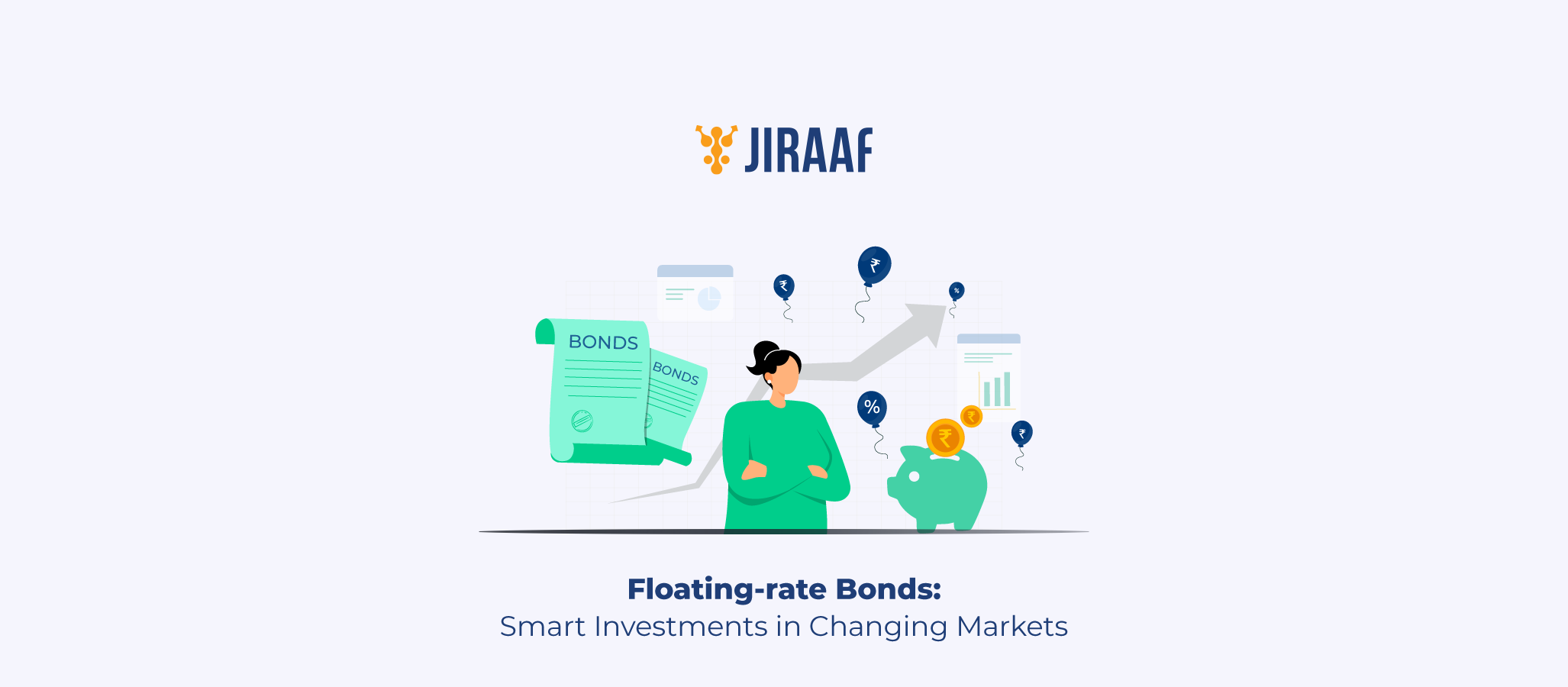For decades, blue-chip stocks have been the cornerstone of long-term investment portfolios. These stocks, issued by well-established companies with a history of stable earnings, have long been seen as the ultimate safe bet in the equity market. However, with rising market volatility, fluctuating dividends, and economic uncertainty, investors are increasingly wondering whether equities alone can provide financial security.
The traditional appeal of blue-chip stocks is being challenged by rising market volatility, fluctuating dividends, and economic uncertainty. In response, investors are increasingly looking toward corporate bonds—an asset class that has long been favored by institutions but is now gaining traction among retail investors as well.
Corporate bonds offer a unique combination of predictable income, stability, and competitive yields, making them an appealing alternative to equities. Moreover, with the continued evolution of India’s bond market and greater accessibility through digital investment platforms, corporate bonds are no longer a niche investment.
But can corporate bonds truly be considered the “new” blue-chip stocks? Are they emerging as a safer, more reliable alternative for long-term wealth creation? Let’s explore.
Understanding Blue-Chip Stocks and Their Investment Appeal
Before we compare corporate bonds to blue-chip stocks, let’s understand what makes blue-chip stocks so attractive in the first place.
Blue-chip stocks represent companies that are leaders in their industries, boasting strong balance sheets, a long history of profitability, and reliable dividend payouts. Think of companies like Reliance Industries, TCS, and HDFC Bank in India, or Apple, Microsoft, and Johnson & Johnson globally. These companies have earned investors’ trust over decades due to their ability to withstand economic downturns and deliver consistent returns.
Why Investors Love Blue-Chip Stocks:
- Established Reputation: These companies have a track record of financial stability.
- Steady Growth: Historically, they have provided capital appreciation over the long term.
- Dividend Payments: Many blue-chip companies pay regular dividends, making them attractive for passive income seekers.
- Resilience in Economic Downturns: While not immune to crashes, they tend to recover faster than mid- or small-cap stocks.
Despite these advantages, blue-chip stocks are still equities, which means they are subject to capital market fluctuations. Recent years have shown that even the most stable stocks can be volatile, leading investors to look for safer alternatives.
The Hidden Risks of Blue-Chip Stocks
- Market Volatility – Even top-tier stocks experience sharp corrections. Events like the 2008 financial crisis, the 2020 pandemic-induced crash, and geopolitical tensions have caused blue-chip stocks to decline significantly, sometimes requiring years to recover.
- Dividend Uncertainty – Many investors rely on blue-chip stocks for dividends, but these payouts are never guaranteed. During economic slowdowns, even large corporations reduce or suspend dividends to preserve cash.
- Long Recovery Periods – Historical data shows that major stock market crashes can take five to ten years to recover, meaning investors need to be prepared for prolonged periods of low or negative returns.
With these concerns in mind, investors are increasingly looking for an alternative that offers consistent returns, lower volatility, and capital preservation—a role that corporate bonds are beginning to fill.
The Rise of Corporate Bonds – A New Investment Paradigm
Corporate bonds have historically been viewed as a niche asset class, primarily favored by institutional investors. However, recent trends are shifting the narrative, making them an increasingly popular choice for retail investors. Several factors are fueling this shift:
1. Higher Yields and Predictable Income
Corporate bonds offer fixed interest payments, making them an attractive choice for investors seeking reliable cash flow. In contrast, stock dividends are variable and can be cut during economic downturns.
- High-Yield Corporate Bonds: Bonds from financially strong corporations now offer yields between 7.5% and 10%, often outpacing fixed deposits and even certain blue-chip stock dividends.
- Risk-Adjusted Returns: Unlike stocks, corporate bonds provide a level of predictability, helping investors manage risk more effectively.
2. The Expanding Scope of India’s Bond Market
India’s corporate bond market has evolved significantly over the past two decades. Once limited to government borrowing, the market now boasts a diverse range of corporate bond issuances:
- Investment-Grade Bonds: Issued by well-rated companies with minimal default risk
- High-Yield Bonds (Junk Bonds): Offering higher returns, though with slightly more credit risk
- Green Bonds: Focused on funding sustainable projects, attracting ESG-conscious investors
- Perpetual Bonds: Offering long-term income streams, popular among institutional investors
With increasing participation from corporates and financial institutions, corporate bonds are no longer a niche investment; they are becoming a mainstream wealth-building tool.
3. Diversification beyond Equities
Many investors are now realizing that corporate bonds provide a great counterbalance to stock market volatility. Unlike equities, which are subject to unpredictable price movements, bonds offer predictable interest income at a set coupon rate and lower volatility.
For instance, during the 2020 stock market crash, while equities plummeted, high-rated corporate bonds held their value, demonstrating their stability even in uncertain times.
4. Democratization of Bonds – How Investing is Becoming Easier
One of the biggest barriers to bond investments in the past was accessibility. Previously, bond markets were dominated by large institutional players, and retail investors had limited avenues to participate. Today, technology is changing that:
- Online Bond Platforms: These platforms allow investors to buy bonds directly, often with a minimum investment as low as ₹1,000.
- Improved Liquidity: With growing participation, investors can now buy and sell corporate bonds with greater ease.
- Transparency in Pricing: Online marketplaces provide real-time pricing, credit ratings, and performance history, helping investors make informed decisions.
This transformation is making corporate bonds as easy to invest in as stocks, drawing increased participation from young investors, high-net-worth individuals, and conservative savers alike.
Corporate Bonds vs. Blue-Chip Stocks: A Comparative Analysis
While both corporate bonds and blue-chip stocks have their merits, a side-by-side comparison highlights why more investors are making the shift toward fixed-income assets.
| Factor | Blue-Chip Stocks | Corporate Bonds |
| Return Potential | High, but depends on market conditions | Predictable interest payments, with yields of 7.5-10%, or even up to 13.5% for high yield bonds |
| Risk Level | High volatility due to market fluctuations | Lower risk, especially for investment-grade bonds |
| Income Stability | Dividend payouts, but not guaranteed | Fixed interest payments, providing reliable income |
| Liquidity | High, as stocks are traded daily | Moderate, but improving with online bond platforms |
| Capital Appreciation | Potential for high growth but subject to cycles | Principal repayment at maturity, with lesser risk of erosion |
This comparison underscores why corporate bonds are increasingly seen as a viable alternative to blue-chip stocks—particularly for investors prioritizing income stability and risk management.
Why Investors Are Flocking to Fixed-Income Assets Now
In recent years, a confluence of economic and market factors has accelerated the shift from equities to fixed-income investments like corporate bonds. Let’s examine some of the key reasons:
1. Market Volatility is Pushing Investors toward Stability
The past few years have shown that even blue-chip stocks are not immune to extreme market swings. Events like the 2008 financial crisis, the 2020 COVID crash, and ongoing geopolitical tensions have highlighted the risks of equity-heavy portfolios.
- Long Recovery Periods: Major stock market crashes can take years to recover, making bonds an appealing hedge against prolonged downturns.
- Less Emotional Decision-Making: Bonds provide a sense of stability, helping investors avoid panic-selling during market crashes.
2. Rising Interest in Passive Income & Fixed Returns
A growing segment of investors is looking for consistent passive income streams. With traditional fixed deposits offering lower returns, corporate bonds provide an attractive alternative:
- Higher Yields: Investment-grade bonds offer 7.5-10% returns, while high-yield corporate bonds go up to 12-13.5%.
- Predictability: Unlike dividend stocks, bonds provide fixed periodic payouts, reducing uncertainty.
3. Higher Bond Yields vs. Dividend Uncertainty
While blue-chip stocks often pay dividends, these payouts can be reduced or suspended during economic downturns. In contrast, corporate bonds provide assured interest payments. For example, AAA-rated corporate bonds in India currently offer yields of 7.5-10%, whereas many blue-chip dividend stocks provide lower effective returns when adjusted for volatility.
4. Changing Investor Behavior
The new generation of investors is more risk-aware, favoring a balanced portfolio that includes fixed-income instruments. This shift is evident in the rising participation of retail investors in bond markets through online trading platforms.
5. Tax Efficiency & Regulatory Support
Government initiatives, such as the introduction of the bond market on stock exchanges and tax-efficient bond structures, have made corporate bonds more accessible and attractive to retail investors.
6. The Fear of Missing Out (FOMO) Effect
Institutional investors, HNIs, and pension funds are increasing their bond allocations. This trend is catching the attention of retail investors:
- “If the big players are doing it, shouldn’t we?”
- Millennials are entering the bond market, realizing that an all-equity strategy may not be sustainable long-term.
7. Increasing Global Integration of India’s Bond Market
India’s bond market is becoming more globally relevant, thanks to its inclusion in international bond indices like JP Morgan’s Emerging Market Bond Index and a few more inclusions expected.
- Foreign Investment Potential: While foreign inflows have fluctuated recently, India’s bond market inclusion in global indices is expected to attract more long-term investments.
- Lower Borrowing Costs for Indian Corporates: More demand for Indian corporate bonds results in better yields for investors.
8. The Ease of Investing in Bonds: A Game Changer
One of the biggest reasons behind the rise of corporate bonds is the growing ease of investing. What was once a market dominated by institutions and HNIs is now opening its doors to retail investors. The rise of online bond investment platforms has eliminated many traditional barriers to entry. Here’s how:
- Lower Entry Barriers: Online platforms allow investments starting from as low as ₹1,000, making bonds accessible to all.
- Seamless Digital Transactions: Just like buying stocks, investors can now purchase bonds with a few clicks.
- More Information Availability: Investors now have access to research reports, credit ratings, and yield comparisons—making informed decisions easier than ever.
With these changes, the question is no longer whether retail investors will enter the corporate bond market—it’s when.
Are Corporate Bonds the ‘New’ Blue-Chip Stocks?
While corporate bonds and blue-chip stocks serve different purposes, bonds are increasingly playing a role similar to that of blue-chip stocks in traditional portfolios. Investors once turned to blue-chip stocks for stability and steady dividends, but with many companies reducing or halting dividends, bonds now fulfill this role more reliably.
Furthermore, corporate bonds issued by high-rated companies are proving to be just as dependable as blue-chip stocks—if not more so—when it comes to providing consistent income with lower risk. This shift has led many investors to rethink their allocation strategies, integrating a higher percentage of corporate bonds into their portfolios for better risk-adjusted returns.
The Future of Corporate Bonds and the Path Forward
The future of corporate bonds looks brighter than ever, thanks to multiple trends reshaping the fixed-income landscape:
- Regulatory Enhancements: SEBI and RBI are introducing measures to improve liquidity, transparency, and retail participation in the bond market.
- Growth of Online Bond Investment Platforms: The rise of digital marketplaces is making bond investments as easy as stock trading.
- Increasing Number of Issuers: More companies, including well-known blue-chip firms, are issuing bonds, providing a variety of investment choices.
Conclusion – Finding the Right Balance
Investors today face a crucial question: should they continue relying solely on blue-chip stocks for stability and long-term growth, or is it time to diversify into corporate bonds? The answer isn’t about choosing one over the other—it’s about striking the right balance.
Key Takeaways:
- Blue-chip stocks remain a solid choice for long-term capital appreciation, but their volatility and uncertain dividend payouts can be a concern.
- Corporate bonds, on the other hand, provide consistent income with lower risk, making them a valuable addition to an investment portfolio.
- Market trends show increasing participation in the bond market from institutional and retail investors alike, driven by higher yields, global integration, and technological advancements.
Should You Invest in Corporate Bonds?
If you’re looking for a way to diversify beyond equities while securing steady returns, corporate bonds should be on your radar. With the growth of online bond trading platforms, investing in high-quality corporate bonds has never been easier. Whether you’re a conservative investor seeking capital preservation or a high-net-worth individual looking for steady yields, the bond market presents a compelling opportunity in today’s financial landscape.
Final Thought: Don’t Ignore the Shift
As the investment world evolves, corporate bonds are proving to be more than just a supplementary asset—they are becoming a core part of modern portfolio strategies, redefining the way investors approach wealth creation and risk management. With bonds becoming more accessible than ever, it might be time to explore how they fit into your investment strategy.
Discover fixed income investments with Jiraaf, a SEBI registered online bonds platform that educates and brings access to a wide array of bonds. Sign up today to explore diversified fixed income investment opportunities to support your goal-based wealth creation journey. Start investing!



